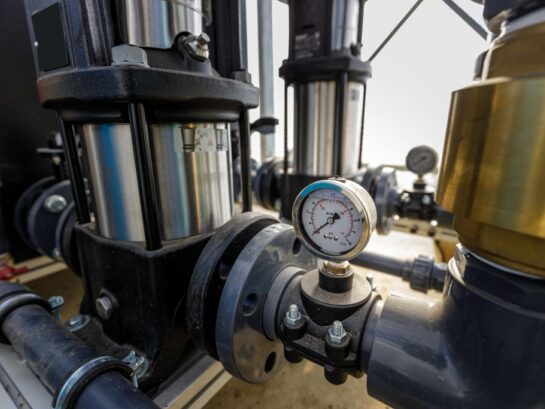What Is Pneumatic Testing and Why Is It Required
Ensuring that all equipment is functional and ready to go can save you the hassle in the long run -- plus lots of money and stress. Your pressure systems are no exception. For your piping systems, you will need to rely on a pressure test to test its functionality.
Pneumatic testing is a key pressure test that can help you assess your systems. Continue reading to learn what pneumatic testing is and why it may need to be performed on your pressure systems.
The Basics of Pneumatic Testing
At the core of pneumatic testing is the use of air -- or another inert gas medium like nitrogen or helium -- to pressurize a piping system. The air or nitrogen is confined throughout the piping system to mimic a high-pressure environment at 100% of the system’s design.
Air and nitrogen are the most commonly used mediums since they are affordable. Helium is more expensive but can be used as the most accurate tracer gas if deemed necessary.
Why Pneumatic Tests Are Necessary
Pneumatic tests and all pressure tests are necessary to ensure your pressure system's safety, reliability, and leak tightness.
This is required before utilizing newly installed pressure systems and ones that have been recently repaired. Pressure tests are performed to help understand the limits and capabilities of a pressure system. These components are crucial to know before putting the pipeline into service. Of course, they also help to prove that your equipment meets industry qualifications and requirements.
What is learned through a pressure test?
- Safety capabilities
- Detecting leaks
- Understand maximum capacity
- Testing Joint fittings
It’s important to note that pressure tests are not a matter of you should do it, but rather it's a mandatory test to comply with industry safety standards.
Pneumatic and Hydrostatic Testing
While pressure tests are mandatory, pneumatic testing is not the first option. Before considering pneumatic testing, most services will attempt performing a standard hydrostatic test. Both are viable options, but pneumatic testing is potentially more dangerous.
Hydrostatic testing indicates similar things as pneumatic testing but uses water instead of gas as the pressure testing medium. Compressed air or nitrogen can contain 200 times more stored energy for the same free volume and pressure conditions compared to water. With much higher amounts of stored energy, it is more likely to cause damage if mishandled.
Pneumatic testing is convenient and more accurate than hydrostatic testing, but the industry requires hydrostatic testing to be considered beforehand.
When Pneumatic Testing Is Utilized
In certain scenarios -- pneumatic testing becomes the only option available. While potentially dangerous, an experienced service will follow all guidelines and ensure that your equipment is not harmed.
Pneumatic testing is utilized when:
- Pressure systems are designed so that they cannot be filled with water.
- Traces of water cannot be tolerated when the system is in service.
For piping systems that transport primarily gas, like natural gas pipelines, pneumatic testing would be used. Water or any other liquid would be too heavy and potentially damage the pipelines from their weight.
How Often Do You Need to Perform a Pneumatic Test?
The industry regulations require that you test your pressure system once when it is first installed and then every time after repair or alteration. If these don’t apply, then you don’t necessarily have to get them retested.
But, as mentioned before -- a leak or sudden collapse of your pressure systems can cause tremendous financial damage. That’s why you should get a pneumatic test done at least once a year. If applicable, keep in mind that you only have to get a pneumatic test or hydrostatic test -- not both.
Benefits of Pneumatic Testing
Even if pneumatic testing is the less used test, certain benefits should be brought to attention.
- More accurate at detecting leaks - The small atomic structure of gases -- particularly helium -- allow them to pass through leaks that liquid cannot. Paired with mass spectrometry, it’s easy to tell if gases have leaked out of the pressure system.
- No water damage - There’s no need to worry about the weight of water collapsing the structure of the pressure system.
- Easy to clean
The accuracy is especially important if your piping or other pressure systems are sensitive to leaks. Pinpointing the location of leaks can prevent catastrophic damage before they occur.
Limitations of Pneumatic Testing
Working with gases ends up being the main cause of limitations when it comes to pneumatic testing. There would be hundreds more stored energy in compressed gases than liquid and volatile if anything were to go wrong. If an old piping system ends up collapsing during the pneumatic test, the energy is released -- causing fatal damage.
Because of this intensity, some limitations are put on pneumatic testing:
- Recommended only for low-pressure applications.
- Chances of equipment or pipe failure are high.
- Only small segments of the piping can be tested at a time.
- The damage tends to be extensive if handled improperly.
- Must be conducted by an experienced service or personnel -- this is not a suggestion.
- Needs special attention and safety regulations -- barriers must be installed, and people cannot be working during the entirety of testing.
Before a pneumatic test can be carried out, the service will need a written justification for the pneumatic testing along with a piping schematic. While service will handle the schematic and other documentation for you, it may delay the speed at which your pressure systems can be tested.
The Precision Fabricating & Cleaning team are experts when it comes to pneumatic testing. Let us handle all of your cleaning and testing needs! Click here and contact us today!
Resources
https://www-group.slac.stanford.edu/esh/eshmanual/references/pressureProcedTest.pdf
https://whatispiping.com/hydrotest-vs-pneumatic-test/#Types_of_Pressure_Testing
http://www.wermac.org/others/ndt_risks_pneu_testing.html

